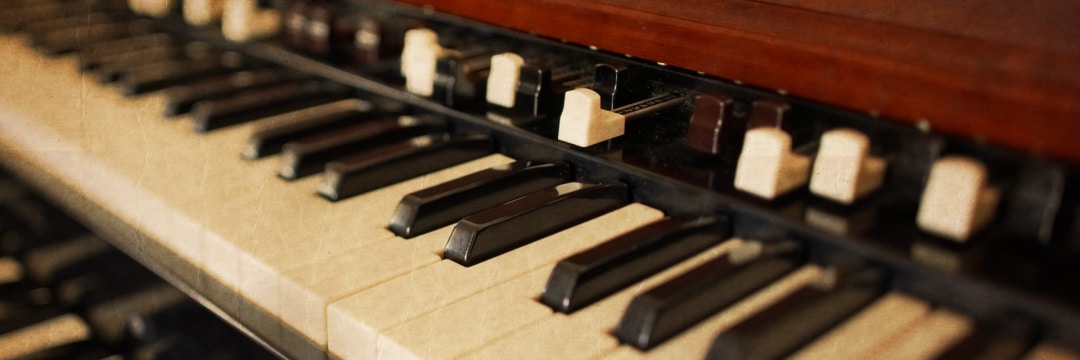Derived from the medieval clavichord and baroque harpsichord, the piano is the most emblematic string instrument in the world. Since the 50s, many genius inventors have transformed their very own keyboards to create these synthesizers, electric pianos and organs that have shaped the history of music. Without further delay, here are four legendary keyboards and synthesizers!
The Rhodes: king of electric pianos
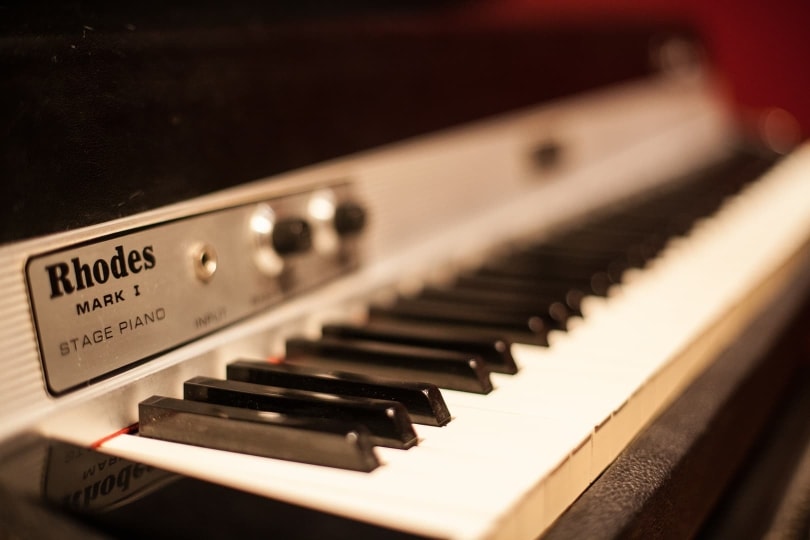
During the Second World War, Harold Rhodes joined the US Air Force. His personal charge: treating the morale of wounded soldiers. To accomplish this, Rhodes built a piano that was light enough and small enough to be transported by suitcase. His piano used pieces of aluminum recovered from the wings of B-17 bombers as replacement strings. Despite having a range of only two and a half octaves, the invention was a great success with the soldiers.
Enamoured with the invention, Leo Fender (creator of Fender guitars) reached out to Rhodes to partner together and develop a more sophisticated 32-key electric piano. Thus was born the first Rhodes series: the "Piano Bass,” used particularly by Ray Manzarek, keyboardist of The Doors for the bass lines of the tracks that the Californian group churned out.
It wasn’t until 1965 with the release of the first "Rhodes Suitcase" and its 73 keys, that the invention saw success and sales explode. At the time, the Fender factory produced just 50 a day. Success continued as the Rhodes electric piano forged the sounds of decades to follow from jazz, to blues and even rock. It can still be found today in many studio recordings and on stage.
The Rhodes sound :
The Minimoog: mini keyboard — maxi sound
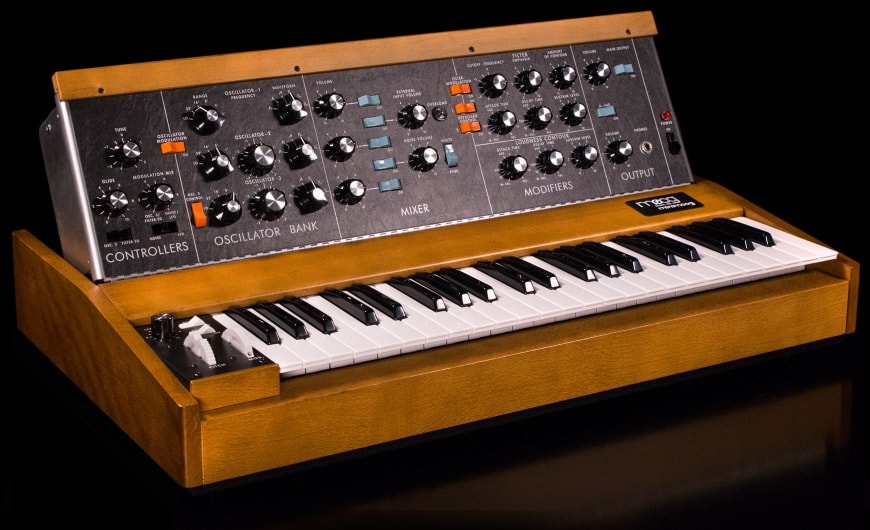
In 1970, two genius inventors, Robert Moog and Bill Hemsath, teamed up to become inventors of the first synthesizer with keyboard keys: the Minimoog.
The Minimoog was adopted by avant-garde Jazzmen like Chick Corea or Herbie Hancock who recognized the potential in adding a new sound to their solos. But it's the progressive rock of Yes, Genesis and Pink Floyd that helped it garner popularity within the general public in the seventies.
The Minimoog is also considered the precursor of electronic music with the German experimental group Kraftwerk and their title Autobahn and Giorgio Moroder composer of Donna Summer's I Feel Love. Moroder was the first to couple the keyboard with a sequencer and explains his discovery in the introduction of the title Giorgio by Moroder on the last album of Daft Punk.
Listen to the Minimoog sound on the original track from Midnight Express, composed by Giorgio Moroder:
The Mellotron: the ancestor of the sampler
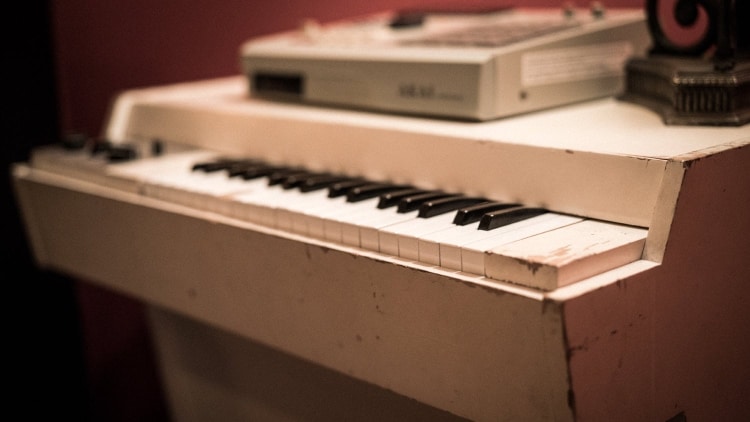
“Mellotron,” on an etymological level, is the contraction of two words: mello, meaning mellifluous and the abbreviation of electronics: a very sweet sound in short!
From the imagination of its creator Harry Chamberlain and marketed in the early 60s by a small company in Birmingham, Great Britain, the mellotron is recognizable by the sound that it produces.
The sound comes from small pre-recorded tapes that are triggered by the action of pressing keys on the keyboard. The interchangeability of its tapes gives the instrument an infinite sound palette, and thus can be considered the first sampler.
It can be found on the introduction of The Beatles' Strawberry Field Forever, and who else but Paul McCartney to introduce it to us?
The Hammond B3 Organ: the jazz sound
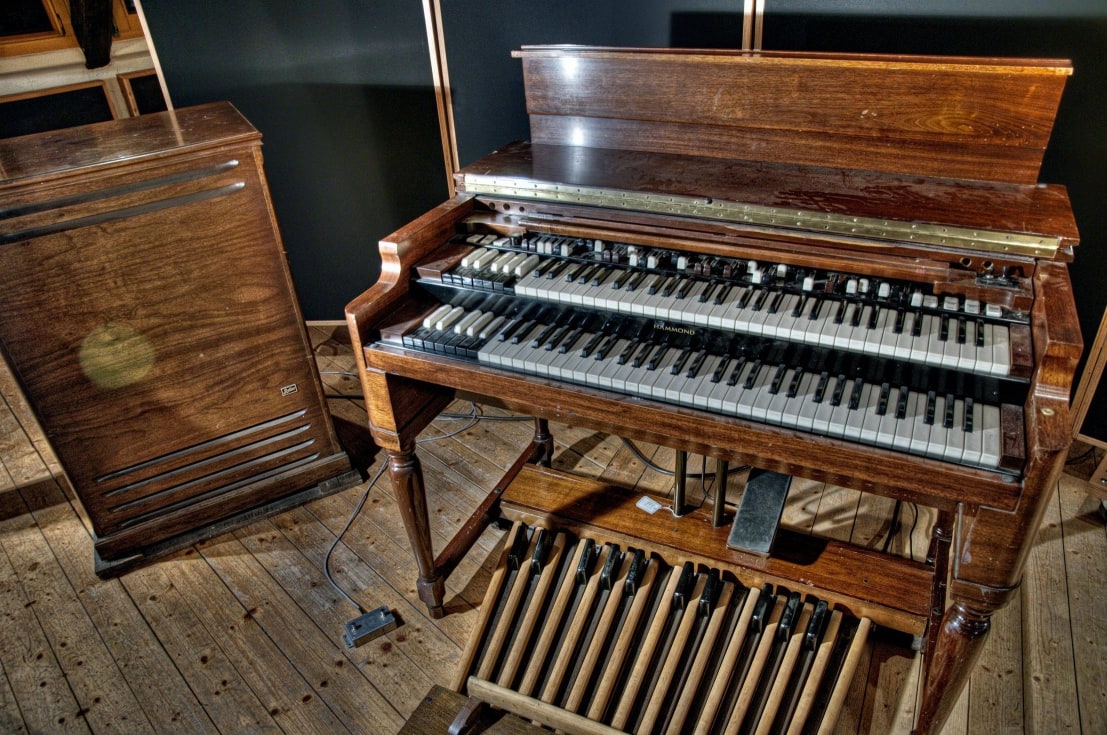
From the mind of Laurens Hammond in 1955, the B3 was originally designed to equip churches that didn’t have adequate space or money to have a pipe organ. Once adopted by musicians such as Billy Preston, or Jimmy Smith it took on a completely new purpose. The B3 quickly become the typical sound of jazz from 1955 and 1970. It was also adopted by progressive rock bands like Pink Floyd and Deep Purple.
This fascinating electromechanical instrument that uses phonic wheels is often associated with a "Leslie Cabinet," a wooden speaker whose speakers rotate to produce the special sound of the Hammond organ. Listen here!
